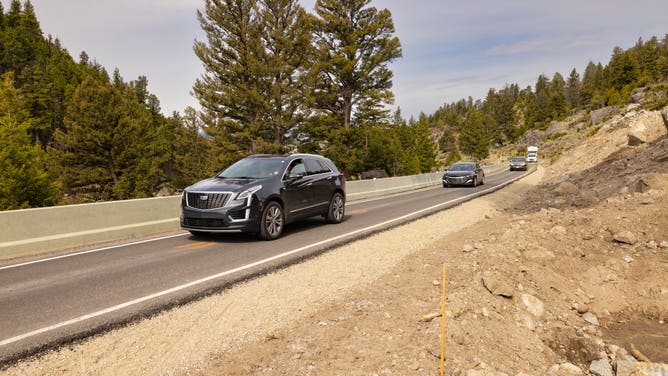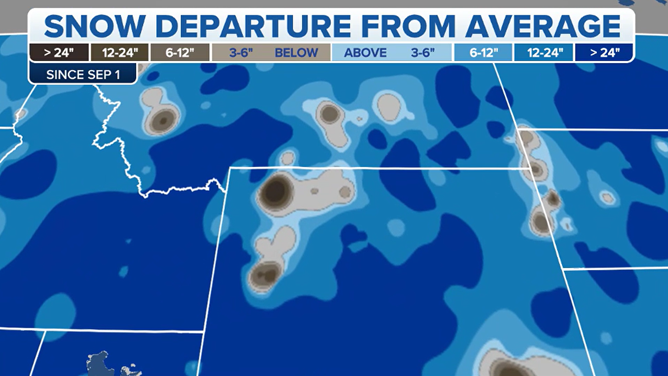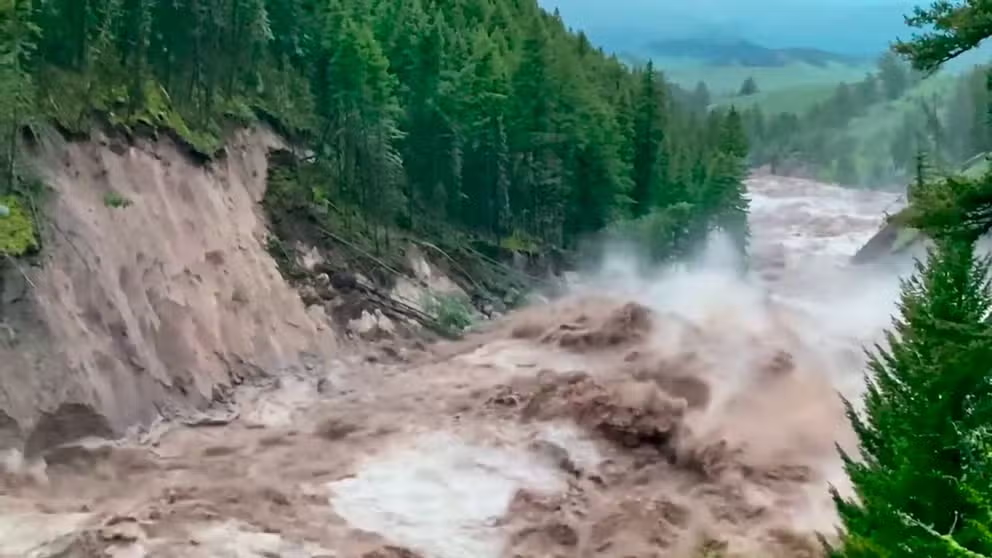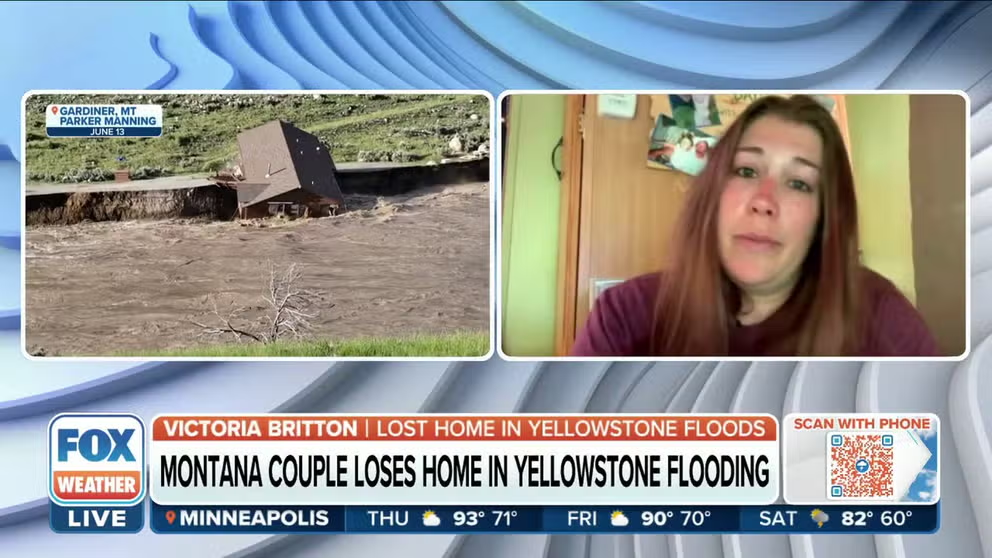Yellowstone National Park’s recovery from last year's 500-year flood still a work in progress
Efforts to reopen Yellowstone National Park’s Mammoth Hot Springs Hotel and restore roadways continue across the more than 2-million-acre wilderness.
Watch: Video shows raging rivers, destruction from catastrophic Yellowstone flooding
The National Park Service released a video showing raging rivers and destruction as the result of catastrophic and devastating flooding at Yellowstone National Park in June.
MAMMOTH HOT SPRINGS, Wyo. – One year after a 500-year flood destroyed parts of Yellowstone National Park, recovery efforts to restore the wilderness area to its former glory continue.
On June 13, 2022, rivers and streams swelled well past the flood stage as storms dropped upwards of a foot of rainfall on top of an already stunning snowmelt.
The flooding triggered mudslides, swept buildings downstream and trapped thousands of visitors, but remarkably no one was seriously injured or killed during the historic event.
Video captured the moments employees lost everything as a housing facility along the Yellowstone River was ripped from its foundation and swept away.
Due to the scope of the destruction and washed-out bridges, park rangers said it took about 36 hours to evacuate the park and conduct damage assessments.
FAMILY WATCHED HELPLESSLY AS THEIR HOME WASHED AWAY IN YELLOWSTONE FLOOD
'Still in shock': Woman describes losing house in historic Yellowstone flooding
Victoria Britton says with her house being swept away by the Yellowstone flood, her and her family have lost almost everything.
The more than 2-million-acre wilderness area was closed for more than a week as officials determined what emergency repairs were needed to allow for a limited reopening.
In the days after the historic event, the U.S. Department of Transportation’s Federal Highway Administration pledged $65 million in funding for Wyoming, Montana and surrounding areas for emergency road repairs.
Now, efforts to restore the park’s infrastructure to pre-flooding condition continue as rangers keep a wary eye on any possible disruptive weather.
"It’s hard to predict what the weather will do in the next few weeks during spring run-off since there was a combination of factors that contributed to the flood happening last year," a park spokesperson said. "We will continue to monitor conditions and respond as necessary."
YELLOWSTONE TOURISTS PUT BABY ELK IN CAR, DRIVE IT TO POLICE STATION

National Park Service Yellowstone recovery
(National Park Service / FOX Weather)
Progress report
Millions of dollars have been allotted to restoration efforts.
Yellowstone National Park’s Mammoth Hot Springs Hotel was expected to reopen during the spring, but its opening was delayed until the completion of the wastewater treatment center. Park staff said they are working with contractors to complete the project as quickly as possible but have not listed when operations will fully resume.
Additionally, some sections of roadways face temporary closures as crews conduct blasting operations for repairs and make the roadways capable of withstanding the effects of erosion and future flooding. The NPS estimated road construction could last through the fall, but questions remain on whether some sites around the Boiling River will ever reopen. The region was created from runoff that used to enter the Gardner River and was a popular swimming location, but the flash flooding completely altered the terrain.
RANGERS SEEK PAIR ACCUSED OF ‘HARASSING’ BISON CALF IN GRAND TETON NATIONAL PARK
Region in different shape than last year
Similarly to 2022, parts of southern Montana and northern Wyoming are facing drought conditions, but the annual snowfall melt is much different than in previous years.
The National Weather Service office in Riverton, Wyoming, reported that during the late spring and early summer of 2022, a burst of unusually warm temperatures quickly melted the snowpack and lead to high river levels.
Locals said that has not been the case this year, with just a steady melt reported, leaving waterways available to take in rainfall if a deluge were to happen.
Many areas did see higher snowfall accumulations this year than in previous seasons, but due to an earlier peak, the scenario of heavy rainfall in combination with increased snowmelt appears unlikely.

2022-23 snowfall departure from average
(FOX Weather)

